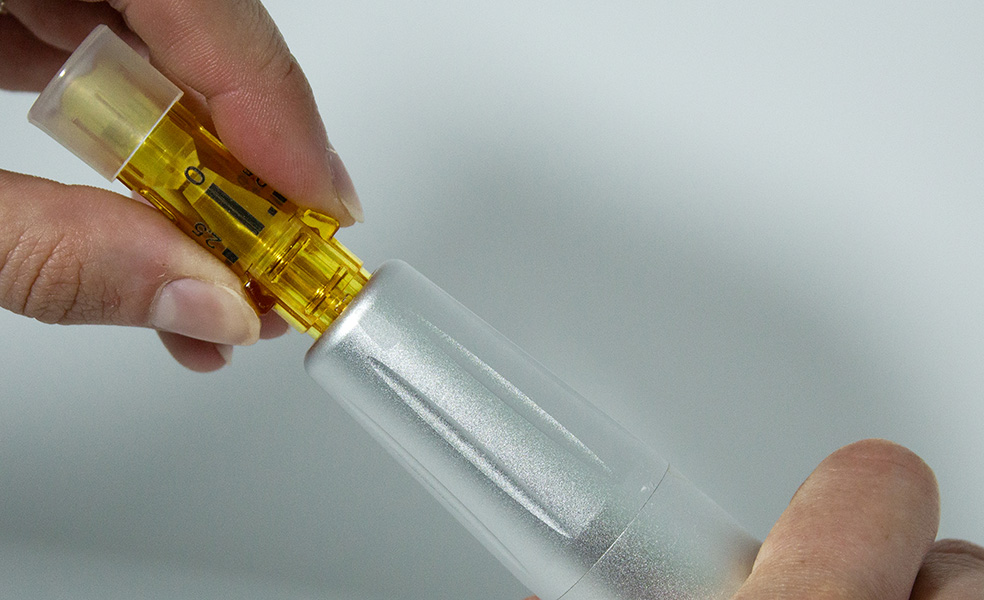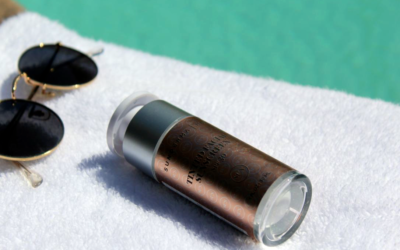Mastering Microneedling: A Comprehensive Guide to Safe and Effective Treatments
Last updated on April 30th, 2024
Microneedling has revolutionized the field of aesthetics, plastic surgery, dermatology, holistic medicine, and skincare, offering a minimally invasive solution for a range of skin concerns, from fine lines, wrinkles, and acne scars, all the way to stretch marks, surgical scarring, hair renewal, and beyond. As the popularity of microneedling continues to soar, it’s crucial to understand the specifics of the treatment to ensure safe and effective treatments and optimal results.
Dermapen® is the perfect solution to any microneedling concern, with tip depth ranging from 0-2.5mm and RPMs up to 8000, consistent results are quick and easy to achieve. The corded design ensures consistent power is delivered to the device for the entirety of the treatment, unlike many wireless devices whose power dwindles throughout. With additional patents like Safelok™ technology and the anti-backflow membrane, safety for each individual is the top priority.
Tips are not reusable to ensure patient safety and eliminate the risk of cross-contamination. Cartridges include 12 perfectly placed needles within each cartridge to ensure flawless penetration and eliminate the risk of dragging or pushing the skin, which can permanently damage the skin. Using a professional, automated microneedling device is the safest and most effective way to achieve your desired results.
In this guide, we’ll delve into the depths—literally—of microneedling, exploring the ideal depth, pattern, and other essential considerations for mastering this transformative procedure.
Optimize Needle Depth for Safety and Effectiveness
One of the fundamental aspects of microneedling is determining the appropriate depth for the treatment. Contrary to popular belief, deeper needle depth does not equal better results. The depth of needle penetration depends on the specific skin concerns being addressed, the area of the body, and the patient being treated. The Dermapen® microneedling device offers manually adjustable needle depth, ranging from 0 to 2.5 millimeters, making it simple to customize procedures based on specific client needs and features.
Another common belief is that pinpoint bleeding must be present in order to perform an effective treatment, which is also not true. Many patients have minimal to no pinpoint bleeding and experience the same, beautiful results as those that do. Needle depth should not be determined based on pinpoint bleeding or other external bodily response factors, except for body language. Periodically checking in with your patient throughout the procedure is imperative to their safety and comfort throughout.
If you notice a patient exuding negative body language, excessive skin flushing, or wincing, be sure to check in and evaluate before continuing. Determining and sticking to a treatment plan for your patient is always best practice, starting low and slow when it comes to depth and speed during treatments not only delivers great results but also allows the patient to ease into combative skin treatments such as microneedling.
In general, needle depth does follow a loose guideline for each area of the face and body, but is ultimately determined by the provider and patient at the time of treatment. For superficial concerns such as fine lines, acne, and uneven texture, a shallower depth of around 0.5 to 1.0 millimeters is typically sufficient. Deeper concerns like surgical scars or stretch marks may require penetration depths of 1.5 to 2.5 millimeters for optimal results.
However, it’s crucial to exercise caution when treating scars or sensitive areas of the body such as the face, neck, and décolletage, as deeper penetration can increase the risk of complications such as bleeding, bruising, keloids, and discomfort. Facial regions with a “thicker” epidermis, for example, the lower cheek area can range in treatment depth from 0.5-1.5mm while thinner regions like the forehead or periorbital area permit much shallower depths from 0.25-0.75 mm.
When determining needle depth for a specific patient it is also essential to consider the age, skin type, and sensitivity level of the individual. Older patients tend to have more fragile, sensitive skin, typically requiring less needle depth than youthful skin. Collagen production begins to dwindle near age 30, gradually decreasing the hydration, texture, and look of the epidermis, making age a great tool in determining a patient treatment plan.
Skin concerns also come into play when determining microneedling treatment depths. Imperfections like acne scarring and deep set wrinkles require increased depth, while concerns such as rosacea and hyperpigmentation require decreased depth due to sensitivity and potential adverse reactions, making it extremely important to customize your treatment plan to each individual.
Understanding the Needle Pattern
In addition to depth, the needle pattern used during microneedling plays a crucial role in achieving desired outcomes. The most common needle patterns include linear and stamping. When using an automated microneedling device such as the Dermapen, a linear pattern is recommended for virtually all treatment areas. Making even horizontal, vertical, and diagonal passes over each treatment area, patients are guaranteed uniform results that cover each part of the treatment area. Similar to aerating a lawn in segments, treatment areas such as the lower cheek, forehead, and neck can be evenly needled at various depths to ensure optimal treatment results.
Stamping is recommended sparingly when using an automated microneedling device, however, certain areas such as the tip of the nose, eyebrows, acne scars, and sides of the nose can benefit from the targeted, small surface area microneedling application. By utilizing linear patterns for larger treatment areas combined with stamping in smaller, hard-to-reach areas, treatments are completely customizable to each patient and their specific skin goals.
Other Considerations for a Successful Treatment
While depth and needle pattern are key considerations in microneedling, several other factors contribute to a safe and effective treatment:
Proper skin preparation is essential for optimizing results and minimizing the risk of adverse effects. When using the Dermapen®, we recommend beginning each treatment by thoroughly cleansing the patient’s face, using a gentle, non-irritating cleanser like Inderma’s Daily Facial Cleanser, and then following with a topical numbing cream.
Many numbing creams can be irritating to the skin, making it essential to use a numbing agent that has been tested and determined safe for use on the skin. Inderma BLT Numbing Cream is not only safe, but it is also effective, making it the perfect numbing solution. With the highest non-prescription concentration of Benzocaine, Lidocaine, and Tetracaine, patients experience minimal to no pain during the vast majority of microneedling treatments, making appointments something to look forward to rather than something to fear.
After the patient is numbed, ensure that all topical numbing is removed and cleaned before beginning microneedling. Once the patient’s face is numb and ready to begin treatment, ensure that you have clearly defined their skin goals as well as their skin concerns and any allergies that they may have. Once this information is collected, providers should customize the treatment and products used throughout, to the specific client.
Always use serums, solutions, and topicals that are tested and determined safe to use with microneedling. Serums with pure, simple ingredients, such as the Inderma Serum Set, are an essential tool in achieving an outstanding microneedling procedure. By tailoring your services to each client, results and rave reviews will skyrocket.
After microneedling, remind patients that the skin is more susceptible to sun damage and infection, making it crucial to follow post-treatment guidelines diligently. Immediately after the conclusion of the treatment, the application of a cooling mask or non-irritating topical is recommended to help soothe and replenish the skin further. Patients are advised to use a physical block SPF, Sunderma, starting 24 hours post treatment as well as avoid direct sunlight for up to a week following microneedling.
Encourage patients to receive microneedling treatments repeatedly and consistently to ensure ideal outcomes. (The frequency of microneedling treatments varies depending on the individual’s skin concerns and treatment goals. While some may see significant improvement after just one session, most people benefit from a series of treatments spaced four to six weeks apart to achieve skin goals.)
Microneedling holds immense promise and power as a versatile and effective solution for various skin concerns, but mastering the technique requires careful attention to detail and adherence to best practices. Microneedling may not be thought of as an art, but in some senses, as with all cosmetic procedures, it is.
By increasing knowledge and understanding of the procedure and specific client needs, providers can set themselves as well as their patients apart from the rest. Determining the ideal depth, needle pattern, and other essential treatment considerations reassures practitioners that they can harness the full potential of microneedling to deliver safe, consistent, and transformative results to their clients. Additional information and resources can be found in our Dermapen Certified Microneedling Course.
Disclaimer: The content provided in this blog is for informational purposes only and should not be construed as medical advice. While we strive to provide accurate and up-to-date information, it is important to consult with a qualified healthcare professional for personalized medical guidance and treatment recommendations tailored to your individual needs and circumstances. Reliance on any information provided in this blog is solely at your own risk



